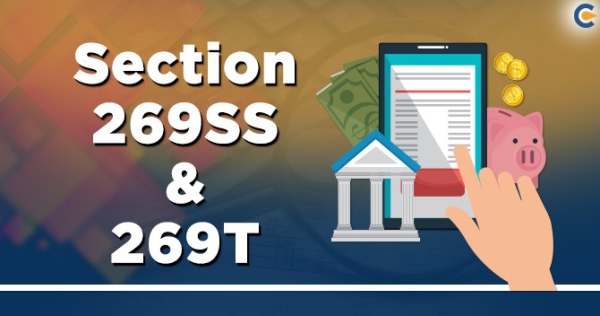

Introduction:
In the evolving landscape of financial transactions, the reliance on cash diminishes with various payment methods available. However, many still prefer cash, fostering concerns about tax evasion. This article delves into the significance of Income Tax sections 269SS & 269T, introduced to combat tax evasion in India. By understanding these sections, we navigate the complexities of financial dealings, ensuring transparency and compliance.
During our good old days, we all believed that cash was the only method to purchase chocolates, ice cream, and other goods. However, as times passed, we began understanding that cash is only one way to complete a transaction between two people or entities. In addition to cash, there are other ways to send and receive money, including account payee checks and bank drafts, net banking, credit cards, debit cards, and the most popular method UPI.
People still prefer to deal in cash even with the abundance of payment options available, but why is this the case? Because they are all aware that if they conduct business in cash, there won’t be any records kept in the books, making it easier for the unrecorded transactions to elude detection by income tax authorities. As a result, the income tax departments noticed that as cash transactions increased, more people and businesses began using them to avoid paying taxes, which gave rise to tax evasion.
In this article we will discuss about two section which were introduced by the Income Tax department in order to reduce Tax Evasion in India and the sections are 269SS & 269T.
1. What is section 269SS?
Section 269SS prohibits acceptance of loans or deposits in cash exceeding Rs. 20,000 in a single day, with certain exceptions. It aims to curb cash transactions and promote transparency in financial dealings.
Let us understand this section with the help of different scenarios:
Suppose Mr. A want to buy a brand new I-phone 15 which is costing around Rs.1,50,000, and the amount available with Mr. A is only Rs.100000, so Mr. A decided to take a loan of Rs 50000 from one of his friend Mr. B, but keeping the section 269SS in mind Mr. A cannot accept Rs 50000 in cash as it exceeds the amount specified in Section 269 SS i.e. Rs 20000.
2. What will happen if the previous loan taken is unpaid?
There could be situations when someone took a loan from the Depositor but wasn’t able to repay back the loan, deposit, or agreed amount yet. In such cases the aggregate of loan accepted should be considered in order to comply with section 269SS.
Let us understand this with the help of example.
Continuing the above scenario of I phone 15, suppose if Mr. An only wants Rs. 18,000 and the rest
Rs. 1,32,000 he is having in his Savings A/C, so he decided to take a of loan of Rs. 18,000 from Mr. B and he bought I-phone 15 for Rs.1,50,000, after that he decided to buy a charger for his brand-new phone so he again takes a loan of Rs.15,000 from Mr. B without paying the previous loan amounting to Rs. 18,000, since the total outstanding is Rs.33,000, the provision of Section 269SS will be attracted and Mr. A. cannot accept the loan of Rs.15,000 in cash.
3. Is there any Exception to 269SS?
The following persons are exempted from the preview of section 269SS:
1. Government;
2. Any banking company, post savings bank or cooperative bank;
3. Any corporation established by central, state or provisional Act;
4. Any government company as defined in section 617 of the companies Act, 2013.
5. Other notified institutions
6. Where the depositor and the acceptor are both having agricultural income and neither of them have any taxable income.
4. What is section 269 T?
Section 269T restricts repayment of loans or deposits in cash exceeding Rs. 20,000. It emphasizes the importance of formalizing financial transactions and discourages the use of cash in loan repayments. That means section 269 T prohibits anyone who fails to return the loan, deposit, or agreed-upon amount otherwise than by an account payee check, account payee bank draft, or an electronic clearing system via a bank account.
Let us understand this with the help of example.
A has taken loan of Rs 19000 from Mr. B and the total repayable amount along with interest is Rs 21500, as the total amount Exceeds Rs 20000 Mr. A cannot repay the loan in cash, he can use the other specified mode in order to repay the loan to Mr. B.
5. Is there any exception to 269 T?
If an individual makes payments to any of the following parties, they are exempt from complying with 269T when they return a loan or deposit of at least Rs. 20,000.
Section 269ST is not applicable to the following individuals and entities:
1. Government
2. Post office savings bank
3. Banking co.
4. Co-operative bank
5. Any Government company as defined in section 2(45) of the Companies Act, 2013
6. Is there any penalty on contravention of section 269SS and 269T?
Penalty applicable in case of:
1. Contravention of 269SS: – 100% of the loan or deposit amount will be the quantum of penalty that can be levied by the assessing officer. A person accepting the loans and deposits in cash above the prescribed limit is liable to pay such penalty.
2. Contravention of 2669T: – 100% of the loan or deposit amount will be the penalty leviable by the assessing officer. A person while doing the repayment of loan or deposits in cash above the prescribed limit is liable to pay such penalty.
Conclusion:
In conclusion, our analysis underscores the importance of adhering to the provisions of section 269SS and 269T. It emphasizes the need for compliance and the potential impact on financial transactions.
The above article is written by Mr. Mihir Verma ([email protected]) and reviewed by Mr. Suyash Tripathi ([email protected]).